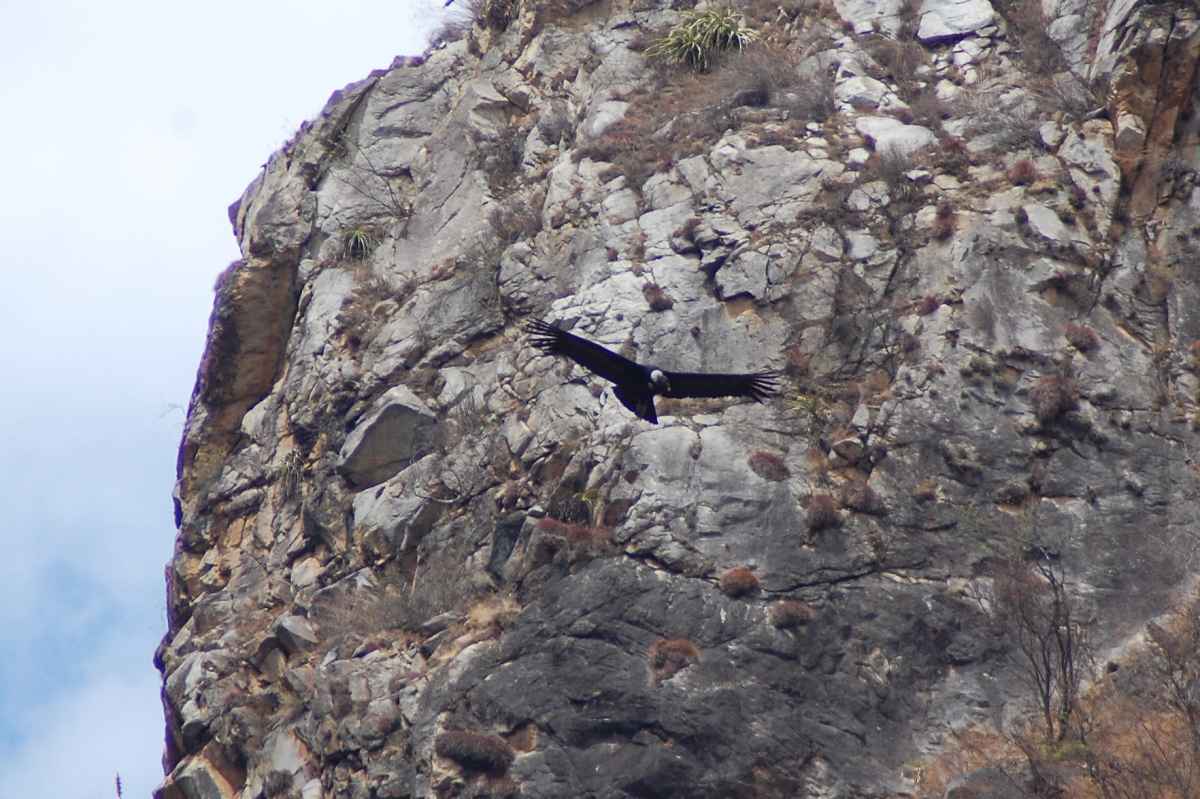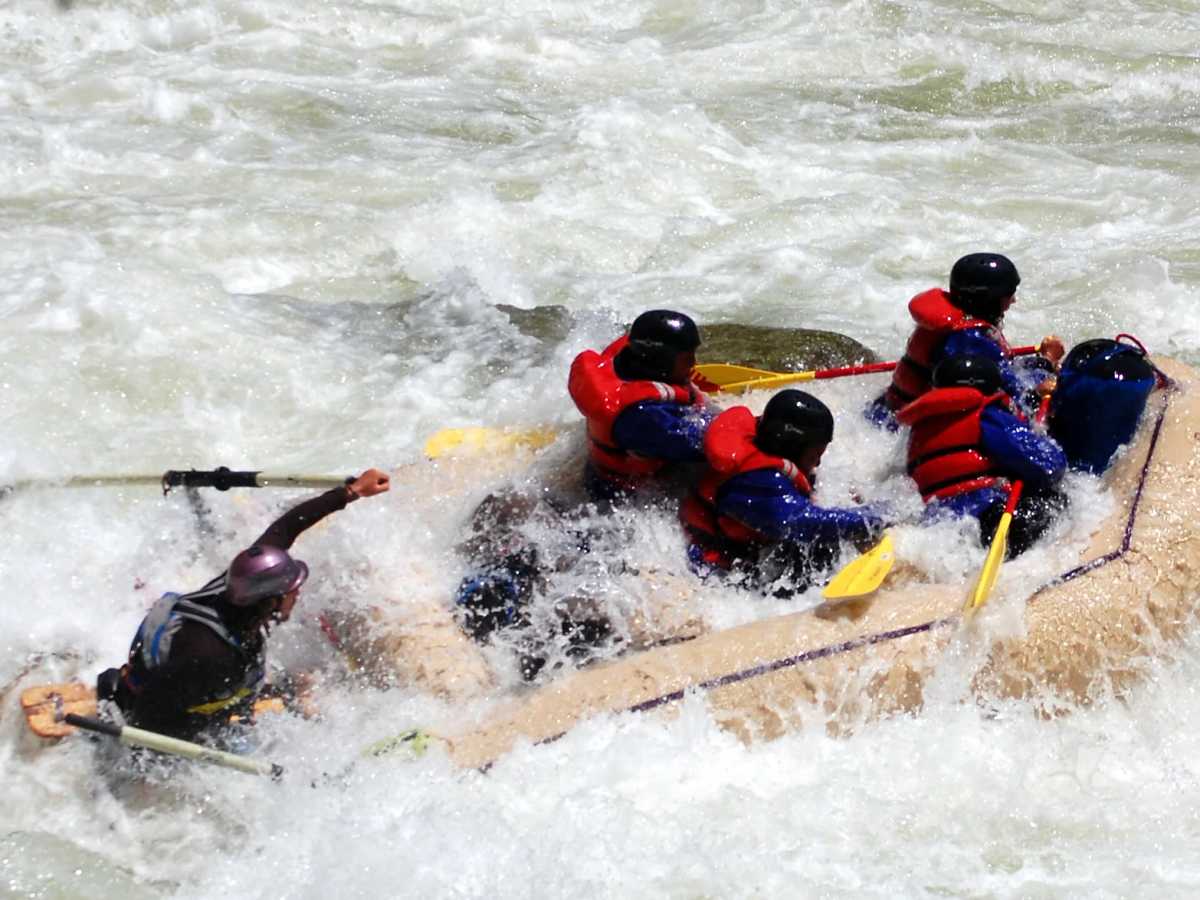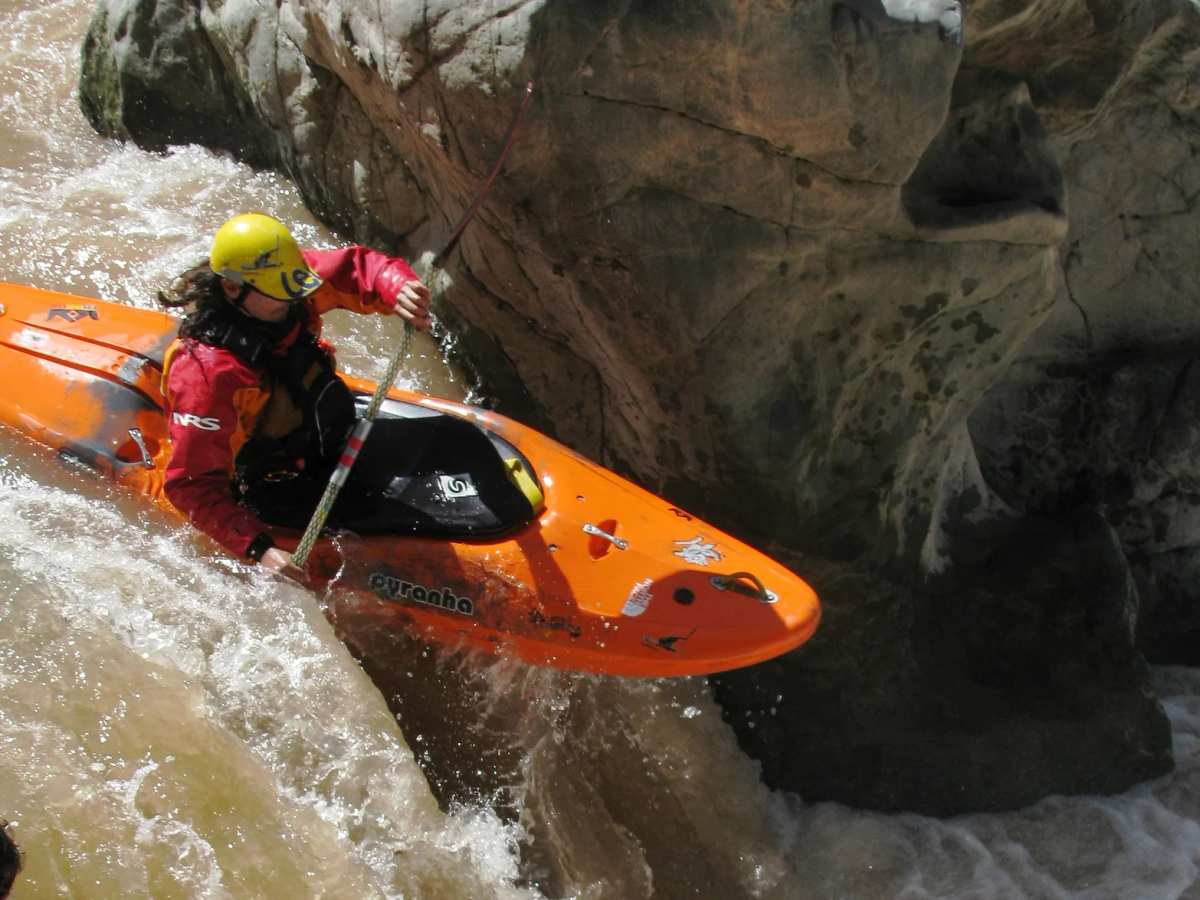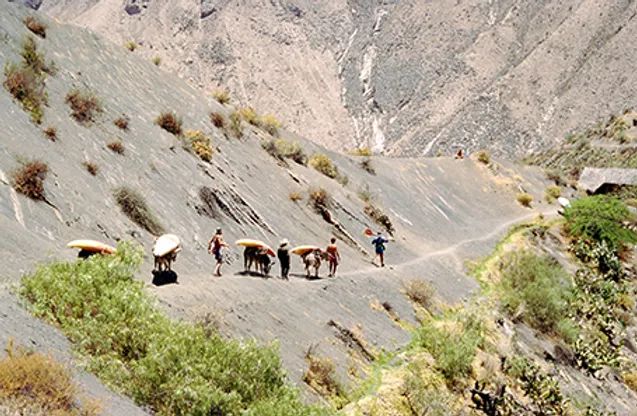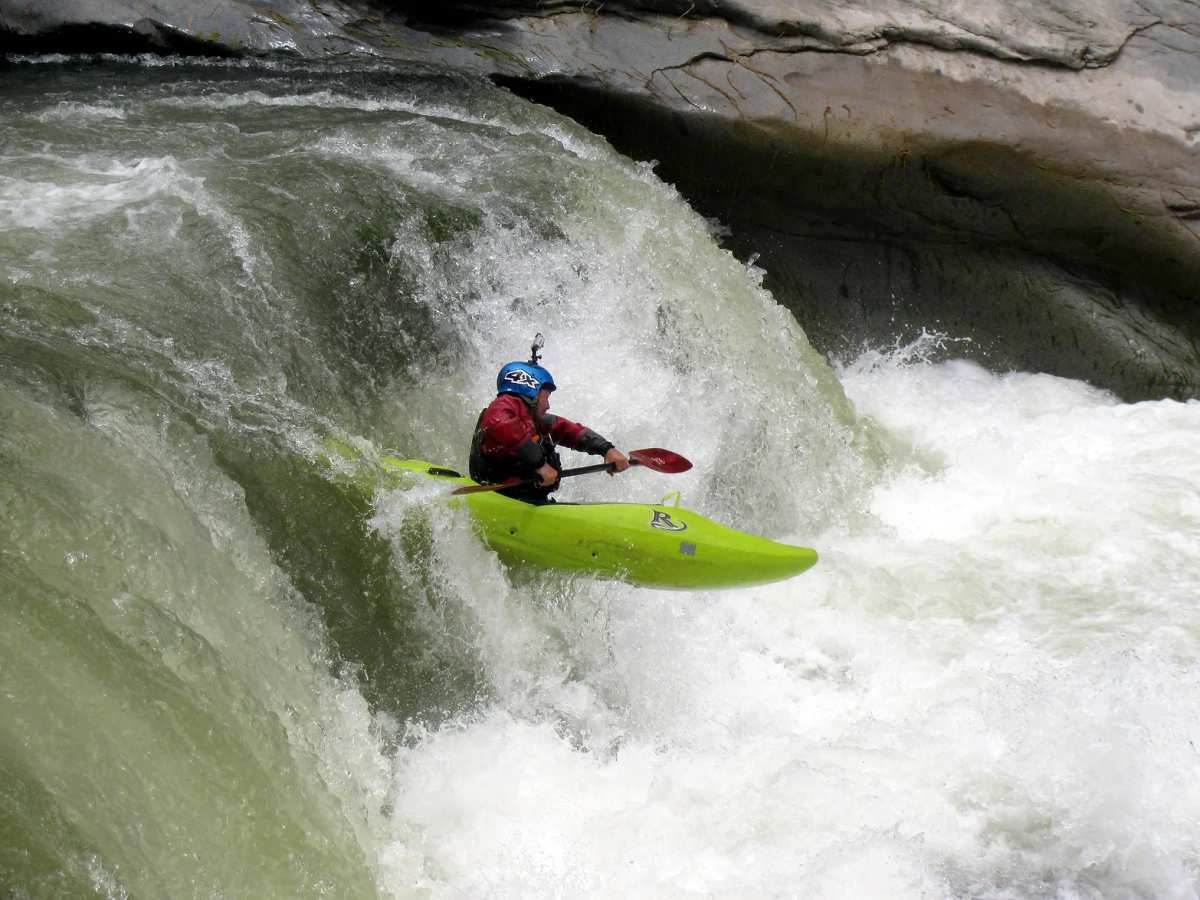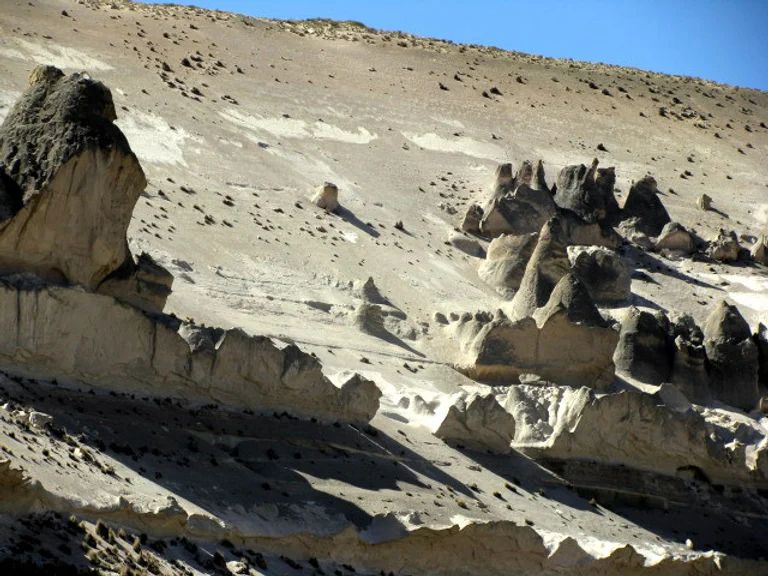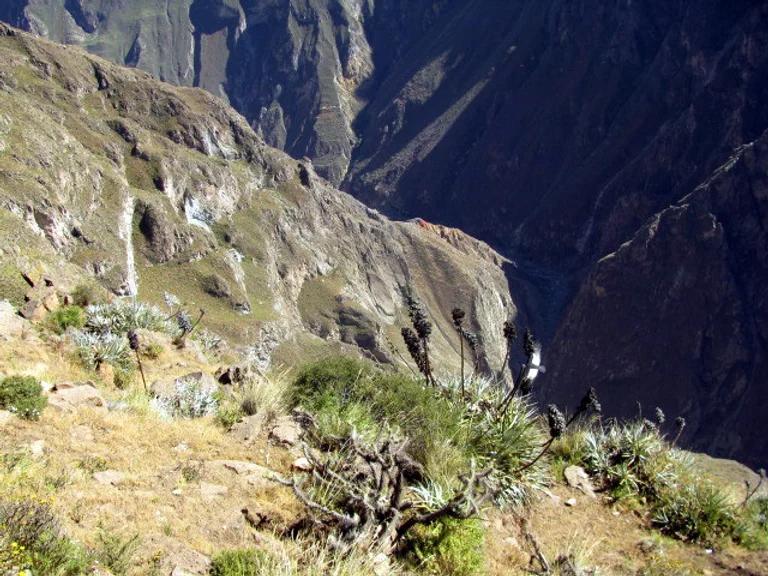Dates: April to November
Price: $1990 per person
Highlights
- Navigate deep canyon walls.
- See Andean condors with 3m wingspans.
- Tackle Class V rapids in lunar landscapes.
- Explore ancient pre-Inca terraces.
- Enjoy natural hot springs.
The canyon was formed by a massive geological fault between the two enormous volcanoes of Coropuna (6425m) and Ampato (6318m), eroded over thousands of years by the longest river on the Peruvian coast. The Colca River reaches depths of up to 3,400 meters on both slopes, extends over 200 km long, and forms part of a gigantic watershed that empties into the Pacific.
Colca Canyon is one of the deepest canyons in the world, located in southern Peru. It is renowned for its breathtaking landscapes, traditional villages, and as a habitat for the Andean condor, a majestic bird with a wingspan of up to 3 meters. The canyon is a popular destination for trekking, cultural tourism, and birdwatching. Visitors can also explore pre-Inca terraces still used for agriculture and enjoy hot springs in the surrounding area.
Lovers of wild and magnificent nature should not miss a chance to get to know the Lunar Canyon of the Colca and its neighboring regions. The canyon itself, with walls that reach at least 4000 meters above the level of the river on one side and more than 3000 m on the other, is incomparable. It is the deepest known canyon in the world.
From its crystalline waters, the walls often open to vistas of towering snow peaks. The “Cruz del Condor,” at the foot of Mt. Mismi, from whose north slope flows the Apurimac River and thus the Amazon, and the “Chocolate Canyon,” are of unimaginable gigantic proportions.
For canoeists, the Colca is beyond compare. The technical difficulties at times are almost insurmountable and put even the most skillful to the test. They are compensated by the adventure and excitement of running a river devoid of all vegetation, accompanied by otters and black salmon in the waters and condors in the skies, surrounded by lunar landscapes and figures carved by erosion into the rocks and volcanic lava, and the colors of the walls with their intermixed geological strata. It is one of the most beautiful, the most thrilling, the most interesting rivers of the world.
Sample Itinerary
Day 1: Arrival to Lima
We meet you on your arrival in Lima and transfer you to a comfortable hotel for overnight.
Day 2: Arequipa/City Tour
In the morning fly to Arequipa. Transfer to our camping place “El Lago” and welcome with a “Pisco Sour”, and an orientation meeting. We tour the city in the afternoon, visiting interesting monuments including a 17th century cloister convent (Santa Catalina) and others. Meals: Breakfast.
Day 3: Arequipa/Huambo
Early departure in our private vehicle. From the canyon near Chivay and Cabanaconde, there are fantastic panoramas of snow peaks to enjoy. We encounter alpacas, llamas and sheep all along the way, vicuñas in the Aguada Blanca Reserve and sometimes even little vizcachas.
At lunch we arrive to the picturesque Chivay town with interesting farming terraces. We continue along deep valleys and Indian communities to reach the lookout point “Cruz del Condor” (1200 meters above the riverbed), and have our first glance of the deep Colca Canyon, and contemplate the silent glide of the condors.
In late afternoon we arrive to Huambo and camp. Meals: Breakfast, Lunch, Dinner.
Day 4: Huambo/Hacienda Canco
In Huambo (3,380 masl) we travel through the valley of Huambo River which is very picturesque with deep canyons and strange figures in the volcanic lava. We camp by the river shore. Meals: Breakfast, Lunch, Dinner.
Day 5: Colca River
After breakfast, we follow up the river on an old Inca road to visit the most beautiful cascades of the whole canyon, called “Juan Pablo II Cascades”. We get into the canyon and have our first contact with the river. From the left bank the Huambo River falls in from a 10m cascade, and further down on the right the Mamacocha River with its turquoise and warm waters enters. Very exciting day in this colorful canyon. Class V rapids (Possible portages). Camp. Meals: Breakfast, Lunch, Dinner.
Day 6: Colca River
The speed of the current makes it possible to navigate swiftly, maneuvering easily between the large boulders in the riverbed. We find thermal springs that fall into the Colca from more than 10 meters up and create beautifully shaped and colored stalactites. The Jasmin River flows into the Colca through a lovely canyon that meets the Colca’s on the left. Many class III-IV-V rapids make it an intense day. Meals: Breakfast, Lunch, Dinner.
Day 7: Colca River
Canyon with piles of sand and rocks in the curves. We find a cascade several hundred meters high called the “Condor’s Shower”, where condors are abundant. New and very different rock formations on the canyon walls. Canyon gets narrow, and the vertical walls are several hundred meters high. We challenge the famous “Rapid of the Peruvians”. Meals: Breakfast, Lunch, Dinner.
Day 8: Colca River (Chocolate Canyon)
Entrance to another canyon, rocky formation in all shades of chocolate. This is the highest part of the whole Colca Canyon, the right wall is more than 4000 meters higher than the level of the river and left one more than 3000 mt. Many rapids class IV-V. Lots of action. Meals: Breakfast, Lunch, Dinner.
Day 9: Colca River (Reparaz Canyon)
Canyon with totally vertical walls. River running very fast in a rock channel 20-30 meters wide. The banks are covered with dry rocks from the ravines. Unforgettable day. Tonight we enjoy a warm fire under the stars. Meals: Breakfast, Lunch, Dinner.
Day 10: Colca River (Pole’s Canyon)/Arequipa
Last canyon of the river. We get to the most difficult rapid of the trip. (At Km. 42 from Canco, 120 mt. long and with a 12 mt. drop). Then the canyon narrows again and the river flows smoothly. Suddenly the walls open out and the river enters a wide canyon with sloping walls. The Colca enters a valley, changing its name to Majes. At our takeout point the vehicle will be waiting to take us back to a comfortable hotel in Arequipa. Farewell dinner. Meals: Breakfast, Lunch.
Day 11: Lima/Home/Cuzco Extension
Fly back to Lima, you enjoy a day on your own, with plenty of time for shopping, relaxing and celebrating. Next day transfer to the airport for your flight home. Meals: Breakfast.
What’s Included
- All transfers on scheduled arrival and departure days
- All meals as indicated in the itinerary (B: Breakfast, L: Lunch, D: Dinner)
- Professional river guides
- Rafting and camping equipment
- Double occupancy tents and hotel
- Wranglers
What’s Not Included
- International airfare
- Airport taxes
- Sleeping bag and pad
- Personal gear
- Personal expenses
- Gratuities for guides

